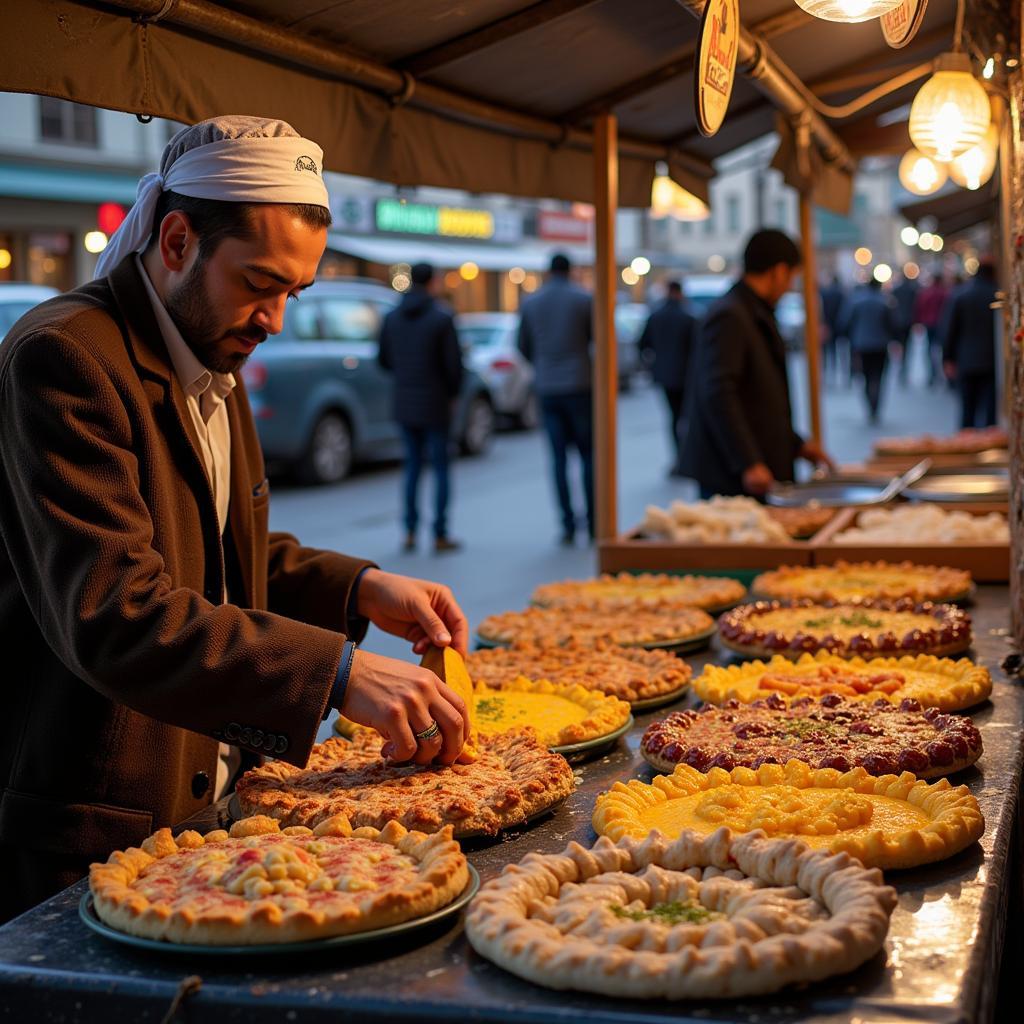A Delicious Journey into the World of African Fritters
African Fritters offer a tantalizing glimpse into the diverse culinary landscape of the continent. These savory and sometimes sweet treats, known by various names across different regions, are a testament to the ingenuity and resourcefulness of African cooks. From street food stalls to family kitchens, the sizzle and aroma of fritters frying in hot oil is a familiar and comforting scent across Africa.
Let’s embark on a culinary adventure to explore the fascinating world of African fritters. You’ll discover their rich history, diverse ingredients, and the cultural significance they hold in various communities. Learn how these simple yet delicious snacks play a vital role in everyday life, from quick breakfasts to celebratory feasts. See for yourself why African fritters are more than just food; they are a celebration of flavor, community, and tradition. See how diverse African beans are used in some of these recipes.
What are African Fritters?
African fritters encompass a broad range of fried dough-based snacks, each with its own unique twist. Some are savory, featuring ingredients like beans, vegetables, or spiced meats. Others offer a sweet indulgence, often incorporating fruits like plantains or bananas. The unifying factor is the process: a batter or dough is deep-fried until golden brown and crispy. This creates a satisfyingly crunchy exterior that gives way to a soft, flavorful interior. African fritters are often enjoyed as a snack, appetizer, or even a light meal, depending on the size and ingredients.
A Taste of Diversity: Exploring Regional Variations
The beauty of African fritters lies in their regional diversity. Across the continent, different countries and even communities within those countries boast their own unique fritter recipes, reflecting local ingredients and culinary traditions.
West African Delights
In West Africa, you’ll encounter akara, a popular street food made from black-eyed peas. These savory fritters are often served with a spicy pepper sauce. Ghana’s bofrot, on the other hand, are sweet, fluffy doughnuts, perfect for a morning treat. Nigerian puff puff, light and airy, are a beloved snack enjoyed at any time of day.
East African Flavors
East Africa offers its own unique fritter variations. In Tanzania, mandazi, triangular-shaped fritters, are a staple breakfast item. Kenya boasts mahamri, cardamom-spiced coconut fritters, often enjoyed with tea. These are just a few examples of the diverse fritter landscape in this region.
North African Influences
North African cuisine, with its rich blend of Mediterranean and Arabic influences, also features fritters. Moroccan sfenj, light and airy doughnuts, are a popular street food, often dusted with sugar.
 North African Sfenj Street Vendor
North African Sfenj Street Vendor
Southern African Specialties
Southern African countries also have their own versions of fritters. Magwinya, deep-fried dough balls, are a common street food in South Africa, often served with a variety of sauces and toppings.
From Street Food to Family Feasts: The Cultural Significance of African Fritters
African fritters are more than just a tasty snack; they hold cultural significance in many communities. They are often served during celebrations, festivals, and religious gatherings. In some cultures, fritters are a symbol of hospitality and are offered to guests as a welcoming gesture.
“African fritters are a testament to the resourcefulness of African cuisine,” says fictional culinary historian Dr. Abena Oduro. “They utilize readily available ingredients to create delicious and satisfying meals, showcasing the creativity and adaptability of African cooks.”
Making African Fritters at Home
Making African fritters at home is often a simple and rewarding experience. Many recipes require just a few basic ingredients and simple techniques. Experiment with different flavors and ingredients to create your own unique fritter masterpieces.
“The joy of making fritters lies in the shared experience,” says fictional chef, Mama Fatou, based in Dakar, “Gathering around the hot oil, sharing stories, and enjoying the freshly fried goodness together is what makes it truly special.”
Conclusion: A Celebration of Flavor and Tradition
African fritters are a testament to the rich culinary heritage of the continent. From the bustling streets of Lagos to the family kitchens of Nairobi, these delicious snacks bring people together and offer a taste of tradition. So, next time you’re looking for a delicious and culturally enriching culinary experience, explore the world of African fritters.
FAQ
- Are African fritters always savory? No, African fritters can be both savory and sweet, depending on the ingredients and regional variations.
- What is the most common ingredient in African fritters? Dough or batter is the base of most African fritters, with variations using beans, plantains, or other local ingredients.
- Can I make African fritters at home? Yes, many African fritter recipes are easy to make at home with simple ingredients and techniques.
- Where can I find authentic African fritter recipes? Online resources, cookbooks specializing in African cuisine, and food blogs are excellent sources for authentic recipes.
- What is the best way to serve African fritters? African fritters can be enjoyed on their own, with dipping sauces, or as part of a larger meal.
Common Scenarios
- Breakfast: Enjoy sweet fritters like bofrot or mandazi with tea or coffee for a quick and satisfying breakfast.
- Snack: Savory fritters like akara make a great on-the-go snack.
- Celebrations: Fritters are often served during festivals and special occasions.
Further Exploration
- Learn more about African bakery traditions.
- Explore different types of African cuisine.
african bakery kitchen pictures
Call to Action
For assistance, contact us at Phone Number: +255768904061, Email: [email protected], or visit us at Mbarali DC Mawindi, Kangaga, Tanzania. We have a 24/7 customer service team.
